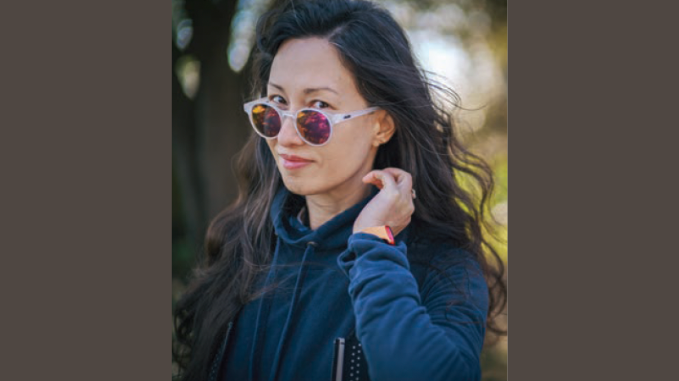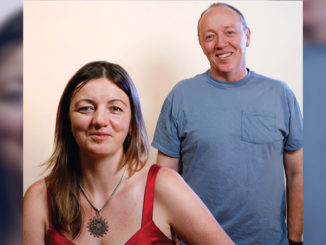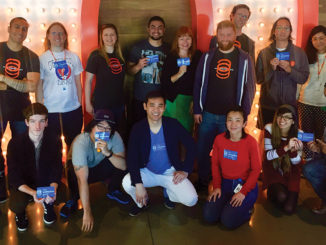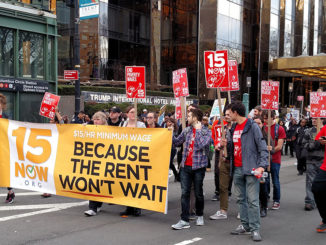
By Christine Yoon
Members of the Editors Guild like me — raised in New Orleans, the only child of a single Korean immigrant mother — will likely agree that finding the path to an eventual career required less of a map and more of a machete.
My ICU-nurse mom worked double shifts, so I pinballed among a committee of volunteer babysitters unrelated to me, many of whom spoke languages unknown to me. As it was the ’80s, smartphone-based entertainment wasn’t yet available (and I wasn’t allowed a Game Boy — as if!). Thus I learned to be tranquil when surrounded by unfamiliarity, and I found ways to occupy long stretches of time on my own, teaching myself new skills and guzzling any book within reach. (I should also mention the requisite little-Asian-girl piano lessons, an early barometer of the achievement of excellence and the origin of any sense of editorial timing I might possess.)
TV and movies weren’t on my radar through adolescence; we’d occasionally visit Blockbuster, and rarely, the theater. My spare time was devoted to animal-based pursuits: horseback riding, volunteering at the zoo, zoning out while staring at backyard lizards, etc. But one fateful day, a high school student government project required that I tote around a shoulder-mount VHS camera, interview classmates, and assemble soundbites on a linear editing deck.
I carried that surprisingly enjoyable experience forward to a “nerd-camp” course in the burgeoning field of multimedia CD-ROM creation via Macromedia Director. My final project for that class may or may not have been a pretext for getting some attractive tennis-playing nerd-campmates on tape, but since I shot them on blue screen, it also served as my first compositing experience.
Based on that class, I invented a job as a college undergrad: making promotional CD-ROM-based video content for the admissions department, which forced me to learn Final Cut Pro. Simultaneously, my enthusiasm for my intended biology track waned around the point we started ogling the insides of still-living creatures. When I giddily realized I was sacrificing study time for my gig, I told my mother I was declaring as a “Cognitive Film Theory” major (because Kenyon College’s film department didn’t exist yet).
Prompted by one viewing of “Farewell, My Concubine,” I took a year-long interlude bumming around China, teaching English. (Ask me about my brush with Communist party-controlled broadcast content.) Upon my return, I enrolled in Florida State University’s (FSU’s) MFA film program, rotating through every on-set position and proving a competent dolly grip on a student academy award-winning short. But after I threw out my back carrying the Panther dolly up some stairs, I traded any grip ambitions for a lifetime of degenerative disc disease.
I took my fresh new MFA to Los Angeles just as the 2007 writers strike kicked off. To make rent, I taught Final Cut one-on-one at the Apple Store. I avoided the sales floor by taking employer-sanctioned study breaks to learn Apple’s Color (RIP), thereby opening the tap to an unreliable trickle of no-budget color gigs found on Craigslist.
With my bargain-basement reel, I managed to land my first broadcast gig: overflow colorist for a mid-size reality house. When their seasonal output waned, I stayed on as an assistant editor, absorbing the excellent data management and troubleshooting skills that accompany ten-camera unscripted shows. As the color work resurfaced, so, too, did a demand for online editing, and my software repertoire amoeba’d outwards to include Avid, Premiere, Resolve, and whatever else a particular situation demanded. My project range also expandedinto theatrical marketing and behind-the-scenes content.
Now in demand for non-union color/online work, I congratulated myself on fulfilling requests I did not yet recognize as unconscionable, work-life balance-wise. For example, I once salvaged a mismanaged post-schedule by finishing two half-hour TV episodes in one 39-hour session. When I landed a long-term position that included my first-ever health insurance, I clung to it even as my fellow FSU alum Benjamin Bumgarner repeatedly alerted me to union opportunities. Once I realized my treasured color/online gig paid less than union assistant editor scale, I, er, adjusted my attitude.
I’ll forever be grateful for Ben taking me on as his assistant, prompting my entry to Local 700, and teaching me the best practices for scripted projects, which permanently changed my work-life balance. Thanks to him, I found my way to NBC’s “Chicago Fire.” After Megan D’Arco and Tim DeLuca took a chance on me, I managed to weasel into an editing seat where I greedily absorbed as much of their expertise as possible and learned to take ownership of offline editorial decisions.
After the pandemic, remote workflows enabled my return to New Orleans where I’m attempting to get a Channel 101-style local short challenge up and running. [Channel 101 is a monthly short film festival in which participants submit a short film in the format of a pilot under five minutes long, and audiences decide which submissions should return with a follow-up episode for the next round. – ed.] This event keeps me actively learning: in post, it’s pushed me into DaVinci Resolve’s Fusion (and even Fairlight — eep!); on the production side, it’s proven that a camera operating on a boat will unfailingly induce my motion sickness.
Despite all the water, my flood-prone hometown gave me zero sea legs. Go figure.
Christine Yoon is lately an editor as well as an au courant resource for New Orleans restaurant recommendations. She can be reached at see.why@cynematics.com.





